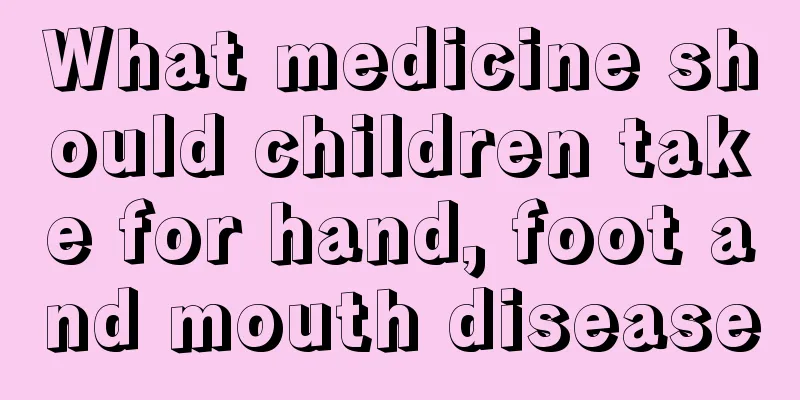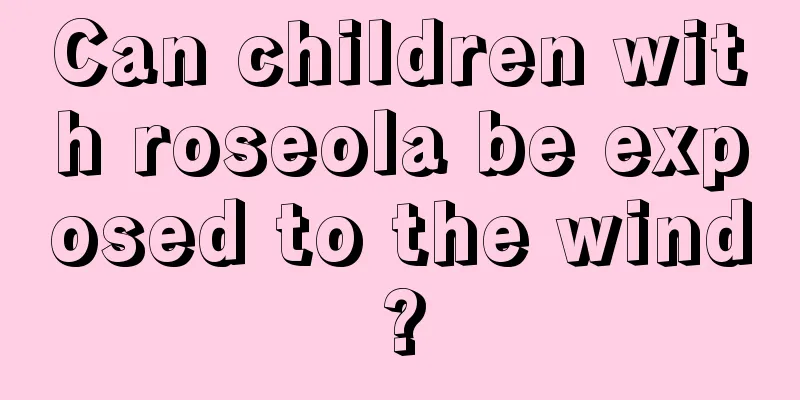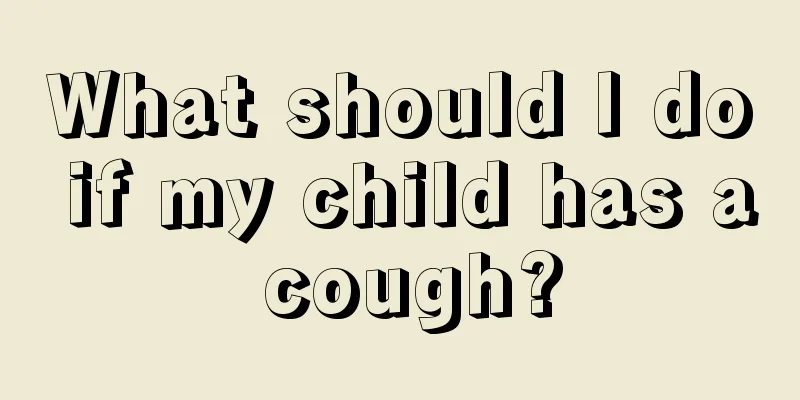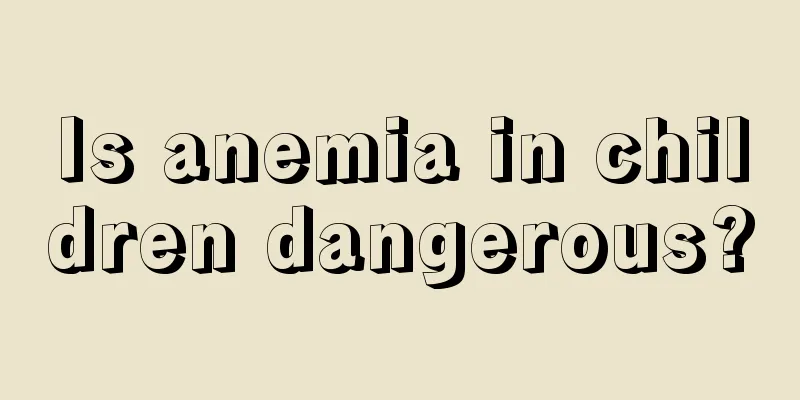What medicine should children take for hand, foot and mouth disease

|
We all know that when summer comes, because of the hot weather, it is a high-incidence period for children to suffer from hand, foot and mouth disease, especially in places such as kindergartens where children gather. If one child is infected with hand, foot and mouth disease, it is likely to infect other children. Therefore, once hand, foot and mouth disease is discovered, it must be treated in time. So what medicines should children take to treat hand, foot and mouth disease? Hand, foot and mouth disease is an acute infectious disease caused by enteric coxsackievirus. The main clinical manifestations are fever and rash in the mouth, hands and feet. It is more common in children under 4 years old. The peak incidence is in July and August in summer. The main route of transmission is through droplets through the respiratory tract or through contaminated toys and unclean hands through the mouth. The initial symptom of the disease in children is fever, which often occurs before the rash. The fever lasts for 2 to 7 days. The higher the temperature and the longer the fever lasts, the more serious the condition is, accompanied by pain in the corners of the mouth, sore throat, drooling, and loss of appetite. After 1 to 2 days, scattered rashes appear, most often on the palms, soles of the feet, oral mucosa, and perianal area. A small number of children are affected by the limbs and buttocks, and very few are affected on the trunk. Although hand, foot and mouth disease in children is not a serious disease, the incubation period for mild cases is usually 3 to 4 days and the disease can heal on its own. However, it is easy to spread. After the herpes in the mouth breaks, it will cause ulcers, which are extremely painful and affect the child's appetite. If not treated in time, it may cause encephalitis, pneumonia, myocarditis, and cause damage to important organs. Hand, foot and mouth disease in children is very similar to several common diseases (upper respiratory tract infection, chickenpox, etc.) and is difficult to distinguish, so parents and teachers should pay attention. Chickenpox: It is distributed in a centripetal pattern, mainly on the head, face, chest, and back, and then spreads to the limbs. Herpetic pharyngitis: Although there is fever and herpes in the pharynx, the blisters are as small as a pinhole and are more common in the pharynx, cheeks, soft palate, and tonsils. The fever is often above 38°C, and herpes does not appear in other parts of the body. Herpes simplex: mostly distributed in the buccal mucosa, tongue and gums. Secondary infection is common in the lips, eyelids and around the nose. It appears as miliary blisters, and there are no skin lesions in other parts of the body. Reminder: To prevent hand, foot and mouth disease in children, you must pay attention to environmental and personal hygiene. Open windows frequently for ventilation in kindergartens and at home and keep the room clean and tidy. Make sure your child washes his hands before meals and after going to the toilet. In summer, don't let your children drink a lot of cold drinks or raw water, and make sure fruits and vegetables are washed and peeled. Food must be sterilized at high temperature and do not eat perishable food. Children's tableware, toys and other items should be disinfected promptly to prevent diseases from entering the body through the mouth. At the same time, strengthen children's nutrition, pay attention to rest, avoid exposure to sunlight, and prevent excessive fatigue and reduced resistance. Keep your children away from crowded public places to reduce the chance of infection. Once parents and teachers find that their children have symptoms of hand, foot and mouth disease, they should not panic. They must take the child to the hospital for treatment as soon as possible, and wait for the child to recover and be approved by the doctor before returning to kindergarten to avoid cross-infection among children. Care: 1. Disinfection and isolation: Sick children should be separated from healthy children first. Children should stay home until the fever and rash subside and the blisters crust over. Isolation is generally required for 2 weeks. Toys, tableware or other items used by the sick child should be thoroughly disinfected. Chlorine-containing disinfectants are generally used for disinfection by soaking and boiling. Items that are not suitable for steaming or soaking can be exposed to the sun. The feces of the child must be disinfected with chlorine-containing disinfectant for 2 hours before being dumped. 2. Maintain indoor air circulation. The air in the child's room should be fresh and the temperature should be appropriate. Open windows regularly for ventilation, and lactic acid fumigation can be used for air disinfection every day. The dosage of lactic acid is calculated as 2 ml per 10 square meters of room. Add it into an appropriate amount of water, heat and evaporate it to disperse the lactic acid mist into the air. Avoid having too many people in the room, prohibit smoking, prevent air pollution, and avoid secondary infection. 3. Rest and diet: The child should rest in bed for one week and drink plenty of warm water. Due to fever and oral herpes, the child has a poor appetite and is unwilling to eat, so the diet should be light, delicious and easy to digest. If there is oral erosion, the child can eat some liquid food. Avoid eating cold, spicy, salty and other irritating foods. |
<<: Symptoms of a relapse of Kawasaki disease
>>: What medicine is effective for children's mouth ulcers?
Recommend
Is it good to bathe a 40-day-old baby every day?
For parents, if their baby is born in the hot sum...
Reasons why babies suddenly stop feeding
There are many reasons why babies don't want ...
Why do boys sweat so much?
Boys sweat more frequently than girls and are mor...
Children with high fever and convulsions
Because children have relatively weak resistance,...
Experience on baby's sleep problems
1. Why does my baby always have a restless sleep?...
What causes a child to have a fever, cough, and runny nose?
The phenomenon of babies having fever, cough and ...
What are the dangers of precocious puberty in children?
Precocious puberty is generally a characteristic ...
What to do if your child has poor memory? Here are some tips to solve your mother's problems
Children's poor memory will greatly affect th...
What medicine should be used for children’s red buttocks?
Parents often find that their baby's buttocks...
What are the tests for retinopathy of prematurity?
Retinopathy is relatively common in premature bab...
The cause of white spots on baby's fingernails
In fact, we need to be especially careful when ta...
Why does my child always have stomachache?
Many people suffer from stomach problems, which a...
Reasons why babies kick their legs when sleeping
Many babies always kick their legs when they slee...
How to make meat puree for a 7 month old baby?
We all know that for babies around seven months o...
Six types of seasonings to remove the fishy smell from children's food
Many ingredients are very nutritious, but because...









